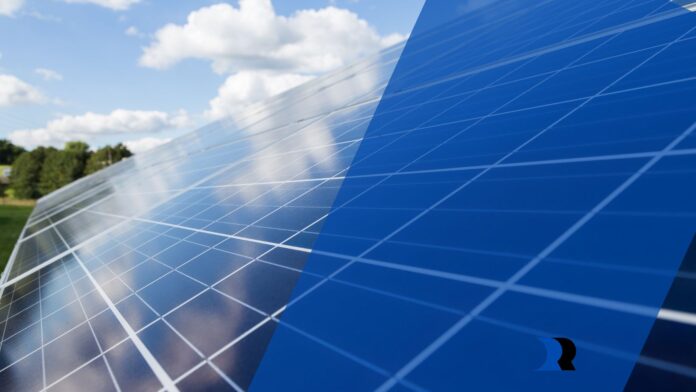The trajectory of solar energy is at an exciting juncture, marked by relentless innovation and technological breakthroughs. As the world pivots towards sustainable energy solutions, solar energy companies find themselves at the forefront of this green revolution.
In this blog, we will explore the cutting-edge technologies that are shaping the future of solar energy companies, ushering in an era of efficiency, affordability, and sustainability.
Advanced Solar Panels:
The backbone of any solar energy system, advancements in solar panel technology are driving the industry forward. Perovskite solar cells, for instance, have emerged as a promising alternative to traditional silicon-based cells. These cells offer higher efficiency levels, lower production costs, and the potential for flexible and lightweight solar panels, opening new avenues for solar energy companies to enhance performance and reduce manufacturing expenses.
Bifacial Solar Cells:
Bifacial solar cells represent a breakthrough in harvesting sunlight from both the front and rear sides of the solar panel. By capturing reflected sunlight from surfaces such as the ground or nearby structures, bifacial technology increases energy yield. This innovation not only improves overall system efficiency but also enhances the adaptability of solar installations in diverse environments.
Energy Storage Solutions:
The intermittent nature of solar energy production necessitates efficient energy storage solutions. Lithium-ion batteries have dominated the storage landscape, but emerging technologies like solid-state batteries offer higher energy density, longer lifespans, and improved safety. As energy storage capabilities advance, solar energy companies can provide a more reliable and consistent power supply, even during periods of low sunlight.
Solar Tracking Systems:
Solar tracking systems, which orient solar panels to follow the sun’s trajectory throughout the day, optimize energy capture. Dual-axis and single-axis trackers continuously adjust panel angles, maximizing exposure to sunlight. Integrating advanced tracking systems into solar installations enhances overall efficiency, making solar energy a more competitive and reliable source of power.
Transparent Solar Technologies:
Innovations in transparent solar technologies aim to seamlessly integrate solar panels into everyday surfaces. Transparent solar windows and solar glass can convert sunlight into electricity without obstructing the view.

Such advancements hold tremendous potential for solar energy companies to transform buildings into efficient power generators while maintaining aesthetic appeal.
Artificial Intelligence (AI) and Machine Learning:
The integration of AI and machine learning in solar energy systems optimizes performance and maintenance. AI algorithms can predict energy production, identify anomalies, and enhance overall system efficiency. Machine learning algorithms can analyze vast amounts of data to continually improve the accuracy of energy yield predictions, allowing solar energy companies to operate and maintain solar installations more effectively.
Perovskite-Silicon Tandem Solar Cells:
Tandem solar cells, combining perovskite and silicon technologies, showcase the potential to achieve higher efficiency levels. Silicon cells are efficient at converting certain wavelengths of sunlight, while perovskite cells complement by capturing other wavelengths. This tandem approach offers a synergistic boost in overall efficiency, providing solar energy companies with an avenue to maximize power generation.
Floating Solar Farms:
The concept of floating solar farms on water bodies is gaining traction as an innovative use of space and resources.

These installations not only save land but also benefit from the cooling effect of water, improving the efficiency of solar panels. Floating solar farms can be deployed on lakes, reservoirs, and even offshore, expanding the possibilities for solar energy companies to harness clean energy in diverse geographical locations.
Advanced Inverters:
Inverters play a critical role in converting direct current (DC) generated by solar panels into usable alternating current (AC). Advanced inverter technologies, such as string inverters and microinverters, optimize power conversion and ensure the seamless integration of solar energy into the grid. Enhanced inverters contribute to system reliability and minimize energy losses during the conversion process.
5G-Integrated Solar Solutions:
The integration of solar installations with 5G technology unlocks new possibilities for communication, monitoring, and maintenance. Smart grids powered by 5G connectivity enable real-time data exchange between solar panels, inverters, and central control systems. This integration enhances the efficiency and reliability of solar energy systems while facilitating remote monitoring and predictive maintenance.
Solar-Powered Desalination:
Solar-powered desalination presents a dual solution by addressing both energy and water challenges. Advanced solar technologies can be harnessed to power desalination processes, providing a sustainable source of fresh water. This integration aligns with the broader goals of sustainability and resource conservation, showcasing the multifaceted impact of solar energy advancements.
Community Solar Initiatives:
Community solar initiatives aim to make solar energy accessible to a broader audience. Shared solar installations allow multiple individuals or businesses to benefit from a single solar array, regardless of their physical proximity to the installation. These initiatives democratize access to clean energy and enable solar energy companies to engage communities in the transition towards renewable power.
Final Thought
The future of solar energy companies is undeniably shaped by a myriad of technological breakthroughs. From advanced solar panels and energy storage solutions to transparent best solar company technologies and AI integration, each innovation contributes to a more efficient, affordable, and sustainable solar landscape.
As these technologies continue to evolve, the collective impact has the potential to propel solar energy into a dominant position in the global energy mix, ushering in an era where clean, renewable power becomes the backbone of our energy infrastructure. The journey towards a solar-powered future is not only promising but also pivotal in addressing the pressing challenges of climate change and resource sustainability.


